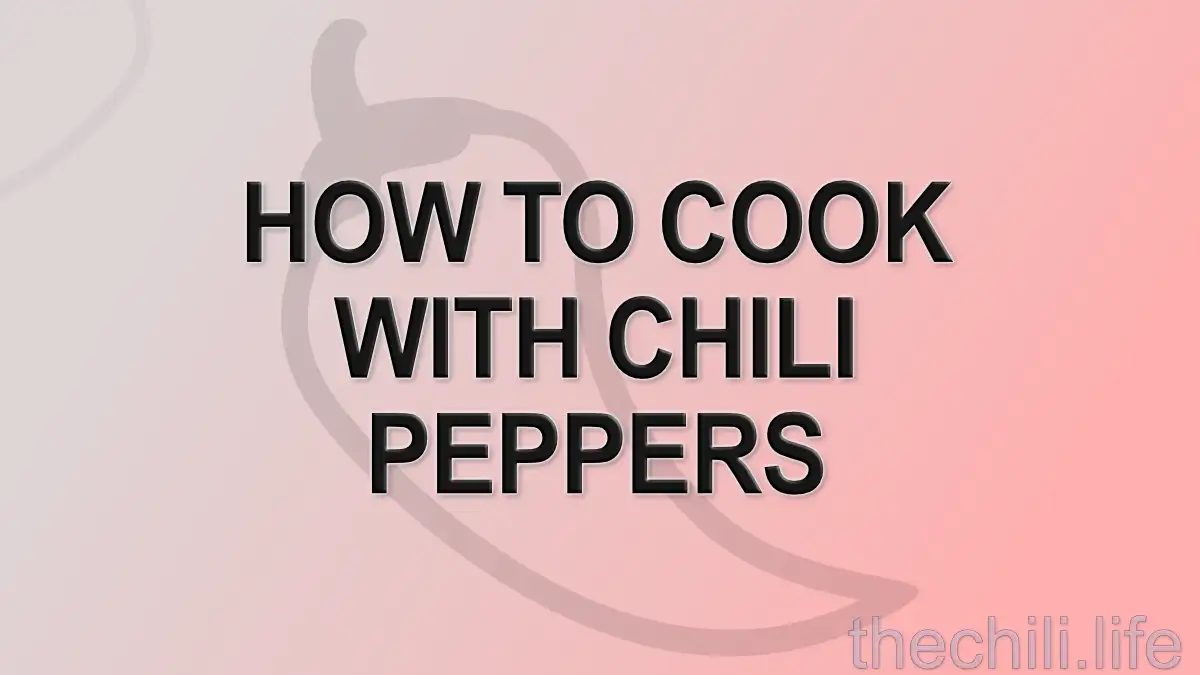How to Cook Chili Peppers: Dried & Fresh
In this post, I will show you how to cook with chili peppers, both dried and fresh. Now, when it comes to spicing up your culinary adventures, chili peppers are where the magic happens. Whether you’re a fan of the fiery kick of fresh chilies or the deep, smoky flavors of dried ones, we’ve got a sizzling journey ahead.
Cooking with chili peppers is all about versatility. These little flavor bombs excite dishes, from fiery hot to subtly smoky. They’re the (not so) secret ingredient that can transform a plain recipe into an unforgettable culinary experience.
Before, we explored what to do with extra hot peppers and uncovered many different uses for chili peppers, from infusing oils to creating spicy condiments. However, this time, I am putting the spotlight on preparing meals that feature the bold and tantalizing flavors of chili peppers. We’ll get into the dynamic duo of dried and fresh chili peppers, each with unique qualities, and unlock culinary techniques to shine these vibrant ingredients in your kitchen. Whether you want to elevate your cooking game with a touch of heat or master the art of balancing flavors, I’ve got you covered.
So, fasten your apron and prepare your taste buds because we’re getting ready to learn how to cook chili peppers, armed with cooking tips, delicious recipes, and culinary techniques that will take your dishes to a whole new level. Get ready to spice things up in the most delicious way possible.
Table of Contents
- Outline
- How to Cook with Dried Chili Peppers
- How to Cook Fresh Chili Peppers
- Recipes with Chili Peppers
- Conclusion
- More inspiration
Outline
In this post, we will embark on a flavorful journey, exploring how to cook with dried and fresh chili peppers. We’ll begin by getting into the world of dried chili peppers, uncovering their benefits when used in cooking. From there, we’ll look at different varieties of dried chilies, including the red and green options that add unique flavors and heat to your dishes. You’ll learn to rehydrate and cook with dried chili peppers, infusing your recipes with their captivating essence. And if you’re in a hurry, discover how to use dried chili peppers without rehydrating them, saving precious time without sacrificing flavor.
Transitioning to fresh chili peppers, we’ll explore their distinctive qualities in cooking, emphasizing the differences between red and green varieties. You’ll find guidance on handling, slicing, and cooking with fresh chili peppers while minimizing chili burn and maximizing flavor.
But our journey doesn’t end there. I’ll tantalize your taste buds with enticing recipes featuring chili peppers, including the Vegan Black Bean and Cocoa Habanero Chili and the zesty Tomato Chili Jam. I’ll also invite you to explore the global spice map, showcasing how chili peppers play a pivotal role in a range of cuisines worldwide.
See also the recent post if you are using chili oils:
How to Cook with Dried Chili Peppers
I will show you how to harness the incredible potential of dried chili peppers in your cooking. Cooking with dried chilies isn’t just about adding heat; it’s about depth, flavor, and culinary possibilities.
The Benefits of Using Dried Chili Peppers when Cooking
I tap into a treasure trove of flavor when I cook with dried chili peppers. Dried chilies offer a rich, smoky profile that enhances dishes with a unique depth. They’re pantry staples, ready to elevate your cooking whenever you need a hint of heat and an explosion of taste.
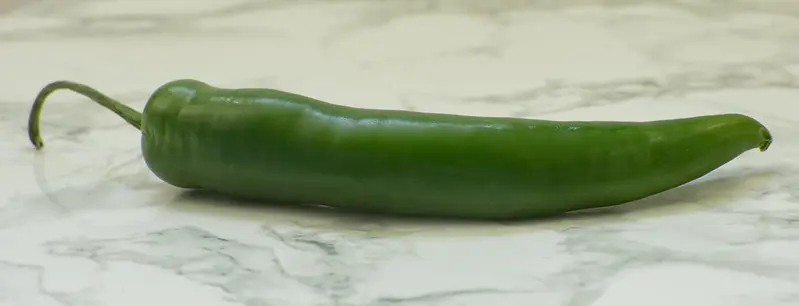
Exploring Popular Dried Chili Varieties to Use in Your Dishes
I love experimenting with various dried chili varieties, but let’s talk about the classic duo: red and green chilies. The red ones, often sun-dried, are known for their robust and slightly sweet flavor. The green dried chilies retain a milder, earthy taste, perfect for those who prefer a subtle smokiness in their dishes.
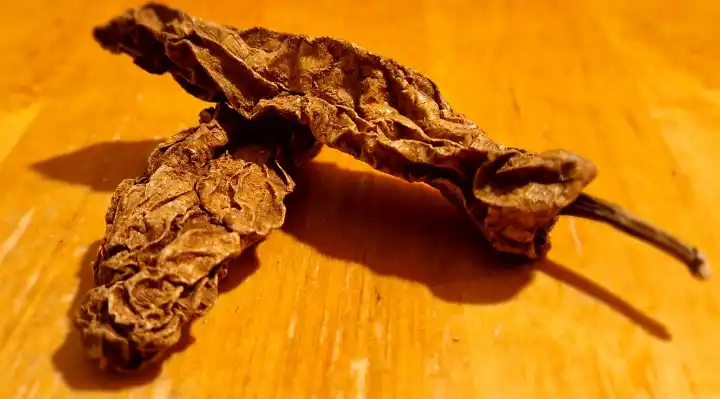
Whether it’s the fiery arbol, the earthy ancho, or the smoky chipotle, these chilies bring their unique charm to your kitchen. By rehydrating them, you can unlock their vibrant flavors.
Rehydrating and Cooking with Dried Chili Peppers
Rehydrating dried chili peppers is one of the steps to infusing your dishes with their captivating essence. I typically remove the stems and seeds, then soak them in hot water for about 20-30 minutes. The softened chilies can blend into sauces, soups, or stews.
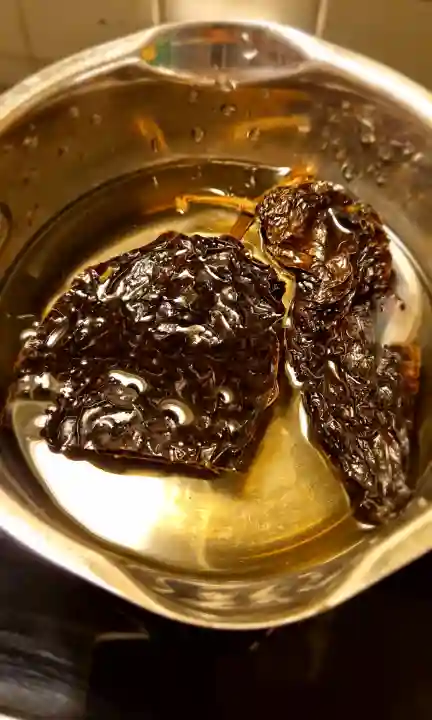
For an extra kick, toast the rehydrated chilies in a dry skillet to intensify their smokiness before adding them to your recipes. Dried chilies can work wonders in sauces, marinades, or even when sprinkled over dishes to create a delightful finishing touch.
Using Dried Chili Peppers Without Rehydrating
Now, you don’t always need to rehydrate dried chili peppers to maximize their fiery potential. These little flavor powerhouses can be used directly in your recipes, adding a unique intensity and smokiness.
You can toss dried chili peppers into the mix if you’re preparing a dish with a longer cooking time, like a slow-cooked stew or a simmering sauce. As they simmer, the dried chilies will gradually rehydrate and release their bold flavors into the dish, infusing it with that irresistible smokiness.
Consider toasting the dried chilies in a dry skillet before adding them for a smoky twist. This brief toasting step intensifies their smokiness and further elevates their flavor profile. Just be mindful not to over-toast, as it can lead to bitterness.
So, whether you rehydrate or use them directly, dried chili peppers are a culinary secret weapon, adding depth, heat, and a hint of smokiness to your dishes. Experiment with both methods to discover the unique flavors they can bring to your recipes.
Adjusting the Heat Level with Dried Chilies
I’ve learned that controlling the heat in your dishes is an art. When using dried chilies, it’s essential to remember that their heat level may vary. To keep your recipes comfortably spicy, taste the chilies before adding them and adjust the quantity accordingly. For milder heat, remove the seeds and inner membranes; for more heat, keep them intact. These simple tweaks can help you find your perfect balance.
How to Cook Fresh Chili Peppers
Let’s dive into the vibrant world of cooking with fresh chili peppers. When I cook with fresh chilies, it’s all about embracing their unique qualities and bringing that fiery magic to my dishes.
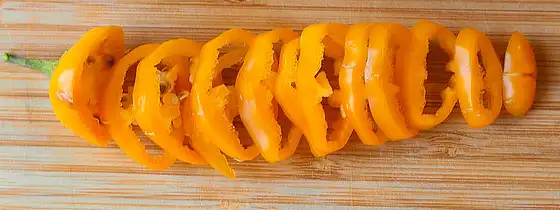
The Uniqueness of Fresh Chili Peppers
Cooking with fresh chili peppers is a game-changer. The vibrant, crisp texture and immediate burst of heat are unlike any other ingredient. These peppers are where you find the raw, unadulterated essence of spiciness.
Red and green chili peppers add different dimensions to your recipes. Having matured longer on the plant, the red ones often bring a sweet, fruity flavor and a more intense heat. In contrast, green chilies offer a milder, earthy taste, making them versatile for various dishes.
Handling, Slicing, and Cooking with Fresh Chili Peppers
I will guide you through handling, slicing, and cooking with fresh chili peppers. Start by washing and drying them thoroughly. Then, make a small incision to remove the seeds and membranes if you prefer a milder heat. Slicing them thinly or dicing them finely allows their flavor to infuse the dish more evenly.
When adding fresh chili peppers to your recipes, consider the timing. Add them earlier in the cooking process for a more integrated, subtle heat or near the end for a burst of spiciness. They’re fantastic in stir-fries, curries, salsas, and more, offering that fire your taste buds crave.
Minimizing Chili Burn and Maximizing Flavor
To minimize chili burn, I’ve learned a few tricks. First, remember to wash your hands thoroughly after handling chilies, especially before touching your face or eyes. A glass of milk or yogurt can help soothe the heat if things get too spicy. When using dairy products in your dishes, like yogurt or sour cream, you reduce the heat and add a creamy, cooling element that enhances the overall flavor.
With fresh chili peppers, the possibilities are endless. From simple garnishes to complex, multi-layered dishes, they can turn an ordinary meal into an extraordinary culinary experience. So, grab some fresh chilies and embark on a spicy culinary adventure that will ignite your taste buds and elevate your cooking to new heights.
Recipes with Chili Peppers
Prepare for a flavorful adventure as we explore mouthwatering recipes that place chili peppers at the heart of the culinary experience. Cooking with hot peppers opens up a world of possibilities, from fiery and intense to subtly smoky and deeply rich. Here, I’ll tantalize your taste buds with some fantastic recipes that showcase the versatility of these incredible ingredients.
Vegan Black Bean and Cocoa Habanero Chili
Step into a world of bold flavors with my vegan black bean and cocoa habanero chili recipe. This unique chili creation showcases the rich depth of black beans, combined with the intriguing touch of cocoa, and all brought to life by the fiery heat of Habanero peppers.
Inspired by the quest for a meat and dairy-free chili, this recipe elevates the humble black bean to the forefront of this spicy sensation. With the addition of diced tomatoes and a thoughtful balance of spices, it’s a hearty meal that’s ready in less than 40 minutes—perfect for weeknights or lazy weekends.
What sets this chili apart is its remarkable flavor profile, intensified by the serious punch of Habanero peppers. The result? It is a flavorful and fiery dish; you’ll hardly believe it’s vegan. If you’re feeling adventurous, add meat and simmer for 1-2 hours to explore even more savory possibilities.
Tomato Chili Jam
My tomato chili jam (also vegetarian) is a delightful fusion of flavors. Made from a blend of tomatoes, Jamaican bell chili fruits, garlic, onion, coconut sugar, and ginger, it’s a sweet and spicy condiment that adds a zesty kick to your dishes.
This versatile jam perfectly accompanies various dishes, from burgers and sandwiches to cheese platters. With its sweet and spicy notes, it tantalizes the taste buds and transforms ordinary meals into extraordinary culinary experiences. A jar of this condiment in your pantry is like a secret ingredient ready to elevate your recipes to the next level.
Exploring Global Spice
Chili peppers aren’t confined to a single cuisine; they’re a passport to the world’s flavors. In Mexican cuisine, they’re the soul of fiery salsa, chili stews, and stuffed peppers.
In Indian curries, they create layers of taste, infusing classics like Chicken Tikka Masala and fiery Vindaloo with an exquisite depth of flavor. Whether savoring the smoky heat of chipotle in a Southwestern dish or igniting your palate with the bold flavors of Korean kimchi, chili peppers have a place in every kitchen.
Discover More Spicy Adventures
If you’re hungry for more spicy adventures, explore these delectable recipes from around the web:
- mp Tacos – A mouthwatering blend of succulent shrimp and spicy salsa wrapped in warm tortillas.
- Jamaican Jerk Chicken – A taste of the Caribbean with a spicy jerk marinade that transforms chicken into a culinary delight.
- Peri-Peri Chicken – Dive into the fiery flavors of Portugal with this spicy, grilled chicken marinated in peri-peri sauce.
These recipes are a gateway to experiencing chili peppers in diverse and delectable ways. Don’t hesitate to experiment; don’t be afraid to spice up your kitchen with the tantalizing world of chili peppers.
Conclusion
As I wrap up this post about how to cook chili peppers, it’s time to savor the key takeaways from this culinary exploration. Cooking with dried and fresh chili peppers opens the door to a world of flavor and heat, offering you the flexibility to enhance your dishes in various ways.
Embrace the art of experimentation in your culinary creations. Let your taste buds guide you as you explore the depths of chili pepper flavors. Whether it’s the smoky richness of dried chilies or the immediate kick of fresh ones, you can elevate your recipes with spice.
And speaking of exploring, don’t miss the delectable Hot Banana Sauce recipe on this blog, which perfectly balances sweetness with chili heat for a unique taste experience.
Stay tuned for more spicy adventures on the horizon. I have a compelling lineup of the best chili recipes to fuel your passion for hot and delicious things.
I’d love to hear from you, our fellow chili enthusiasts. In the comments below, share your favorite ways to prepare meals with chili peppers. Tell us about your recipes, secrets to perfect heat, and spicy success stories. And if you found this post inspiring and informative, don’t forget to share it on your preferred social media platforms. Let’s keep the fiery conversation going!
More inspiration
Here are some more post that may spark your inspiration to cook with dried or fresh hot peppers:
- Fresh vs Dried Chiles: Choosing the Right Spice for Your Dish
- Dried Chili Pepper Recipes: 6 Mouthwatering Examples!
- How to Make Chili Paste from Dried Chiles
